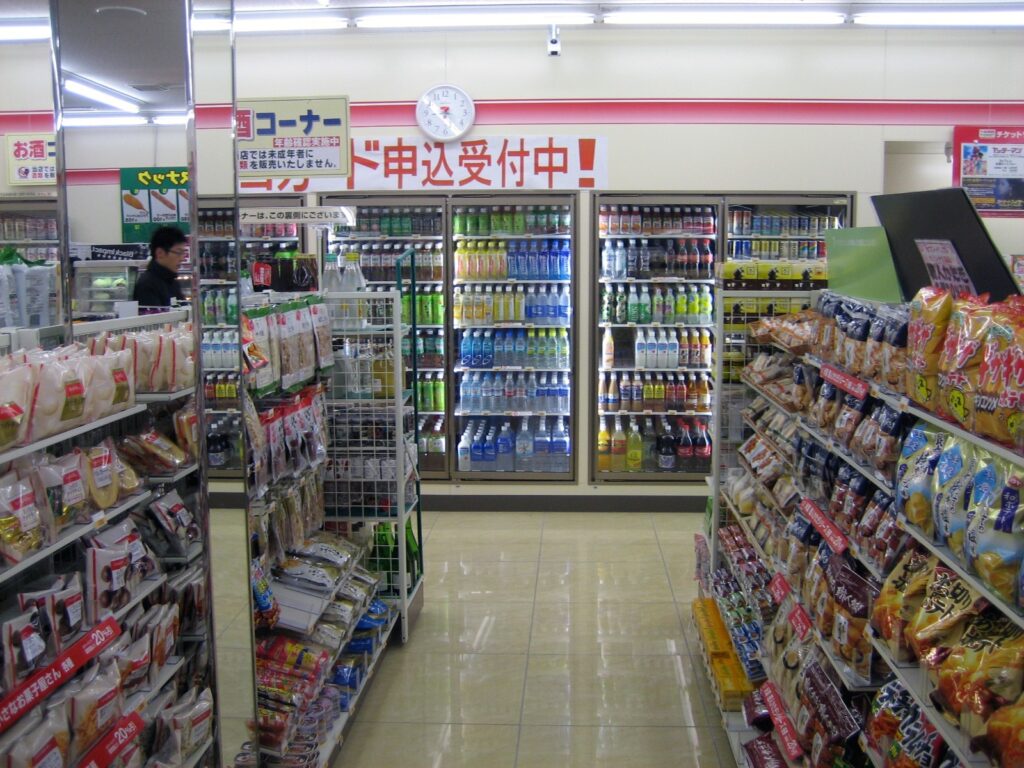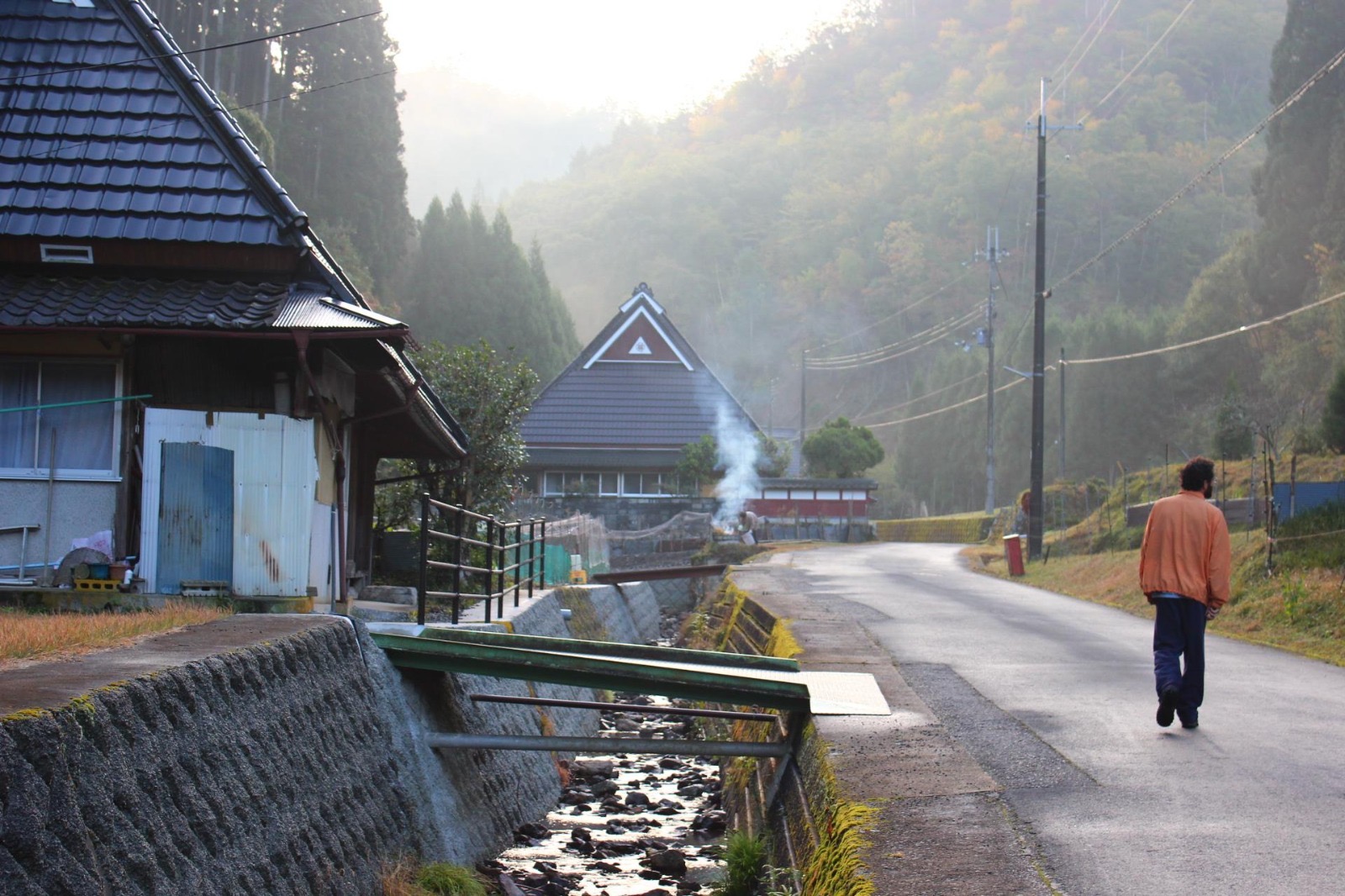The orange, red, and green neon sign shone in the darkness like a beacon of hope – 7-Eleven, the most popular Japanese convenience store. I had been in Japan for a few months at that point, in the middle of a four-month trip with my friend Michael. We were bouncing around the country from north to south, volunteering on various farms for three to four weeks at a time.
During this stretch, we were staying at a persimmon farm in Ukiha, a small city tucked away in Fukuoka Prefecture’s rolling green hills. Our daily routine was comfortable. We woke up early to greet the chilly Kyushu morning. Oba-chan (Japanese for “grandmother”) made us breakfast: toast, rice, and hot tea. Then it was off to the persimmon fields for a day of harvesting.
At this particular farm, we’d end almost every day at a 7-Eleven or another Japanese convenience store (konbiniensu sutoru or konbini for short) for something sweet. We’d trek through the jet black streets, our iPhone flashlights guiding the way. Michael and I both usually went for a taiyaki ice cream, a fish-shaped cake filled with vanilla ice cream and a solid chocolate center. The perfect end to a hard day’s work.
By now I’m sure you’re somewhat aware of the wonders of the Japanese convenience store. Anime, manga, and plenty of other media have all featured these delightful all-in-one shops. Or maybe you’ve learned about them through osmosis. I’m here to tell you that in Japan, these 24/7 gems are truly worthy of the title “Japanese convenience store.”
But they are much more than that. Throughout our four months trekking the country, konbini, put simply, saved us. They nourished our souls when constant travel had us down. They filled our bellies when everything else closed shop. They gave us a warm sense of familiarity when we felt a pang of homesickness.
The History of the Japanese Convenience Store
While the first Japanese convenience store technically opened in 1969, the year that many often point to as the true beginning of konbini is 1974, when the first 7-Eleven opened in Tokyo’s Toyosu neighborhood. It was a collaboration between Japanese retail giant Ito-Yokado Co., Ltd. and the US-based 7-Eleven owner (at the time), the Southland Corporation.
Fast forward 50 years: there are over 50,000 Japanese convenience stores – including 7-Eleven’s main competitors, Family Mart and Lawson’s – across the country’s 47 prefectures. Many of these stores are open 24/7.
Despite their current ubiquity, American-style convenience stores took a few years before truly catching on in Japan. Onigiri played a big role in the rise of konbini. These triangular rice balls, which are traditionally wrapped in dried seaweed and filled with pickled plum, fish, or some other salty delight, are believed to date back over 1,000 years.
Like hot dogs are to American convenience stores, onigiri are the perfect simple on-the-go snack: easy to hold in one hand, salty, filling, cheap, and a tasty companion to sweet drink or a cold beer. It should come as no surprise then that onigiri are what truly powered Japanese convenience stores to reach the heights they have today. Altogether, convenience stores in Japan make ten trillion yen per year – that’s over $70 billion!
Today, what started as a small shop selling ice in Irving, Texas in 1927 is now a Japanese cultural touchstone owned by a Japanese company. That’s right – In 1991, Ito-Yokado Co., Ltd. purchased 70% of the Southland Corporation, making it the primary owner of 7-Elevens worldwide. The Japanese convenience store has exploded ever since.

Snack Heaven
Now that we understand the history of the Japanese convenience store, it’s time to dive into what everyone is really here for: snacks! When it comes to snacking, konbini are in another league. Seasonal treats, year-round staples, comfort food, healthy food, fresh, packaged, sweet drinks, coffee, tea, beer, sake. These nourishing nooks have it all. Dare to enter on an empty belly and you may just waddle out a few pounds heftier.
Every convenience store chain has its own niche – 7-Eleven is best known for its fresh sandwiches and bento meals, Lawson’s has the sweets on lock, and FamilyMart’s fried chicken is basically a national treasure on par with anime.
7-Eleven’s most beloved snack is its egg salad sandwich: chopped egg with a generous helping of mayo between cloud-soft white bread. These are too mayo-heavy for my liking, but they’re more popular than The Beatles. If you’re looking for something a bit sweeter, 7-Eleven’s anpan or dorayaki – variations of pancakes filled with red bean paste – have you covered.
One of the best features of konbini are their constantly rotating seasonal offerings. Japan is a country that runs on seasons, and this is deliciously reflected on konbini shelves. Winter brings strawberry flavored snacks and drinks; with spring, of course, comes sakura, or cherry blossom. Summer is the time for fruity drinks, ice cream, and cold noodles, while fall is chestnut season.
More Than Just Food
As the onigiri craze shows, the Japanification of the American convenience store concept – adapting to local tastes and needs – has been an undeniable success story. But this tale does not end with the delectable palm-sized rice balls.
Japanese convenience stores truly earn the title of “convenience store” – they have ATM machines, they offer printing, copying, and shipping services, they sell tickets to various attractions (concerts, railway passes, and much more). And most importantly for any traveler in desperate need to connect – they have great wifi!
During my four months in Japan, konbini were my oasis. No matter what I needed – food, a full meal, a thirst quench, cash, rail tickets, wifi – I knew I could count on one of the 50,000+ convenience stores across the country. And for a traveler, what could be more important?
Japan can be an overwhelming place to visit for some travelers. English is hardly spoken outside of the main cities and its cultural idiosyncrasies can be difficult to navigate. In a sea of culture shock, konbini are your life raft, your safety blanket, your slice of predictability and comfort. From soul-warming snacks and thirst quenching drinks, to reliable wifi and clean bathrooms, konbini are one of the best parts of a country with many highlights.



